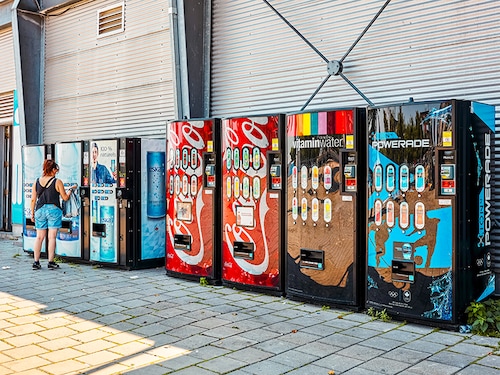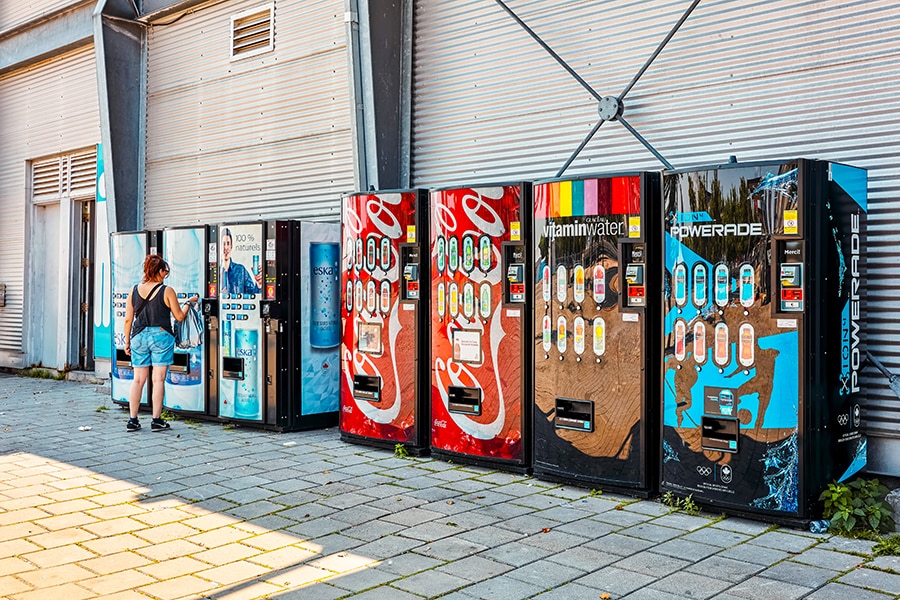AI powered marketing: A 5-stage path to success
Delivering deeply personalized customer experiences requires a significant shift to AI-powered marketing, says Darden Professor


 Coca-Cola’s investment in a sophisticated sports drink dispenser powered by a digital platform is paying off
Coca-Cola’s investment in a sophisticated sports drink dispenser powered by a digital platform is paying off
Image: Shutterstock
What did Coca-Cola have to do with LSU’s national championship win? Is it possible that what helped the Louisiana State University Tigers beat Clemson’s football team in 2020 was “Tiger Juice" — a sports drink from Coke’s “Powerade Command Center" — personalized to the needs of each athlete? The jury is still out.
What’s undisputed, however, is that Coca-Cola’s investment in a sophisticated sports drink dispenser powered by a digital platform is paying off. “It allows Coke to collect the consumer data required for marketing and to create value through personalization," says Darden Professor Raj Venkatesan, an expert in customer relationship management, mobile marketing, and marketing metrics and analytics. “It also helps drive innovation and growth." Venkatesan leads the Digital Marketing Innovation Executive Education program at Darden.
Based on insights from the Powerade Command Center first piloted at LSU, Coca-Cola was able to expand its Powerade product lineup for the first time in over a decade with the launch of Powerade Ultra and Powerade Power Water.
“Coca-Cola didn’t get to the Powerade Command Center overnight," says Venkatesan. “It was a function of using a methodical road map for including AI in their marketing strategy."
Having studied brands like Coca-Cola, Venkatesan and his collaborator Jim Lecinski of Northwestern University’s Kellogg School of Management developed a framework to help marketing professionals in any industry build AI and machine learning into their organizations’ marketing toolkits. Venkatesan and Lecinski describe their framework in a book they’ve co-written, The AI Marketing Canvas: A Five-Stage Road Map to Implementing Artificial Intelligence in Marketing, from Stanford University Press.1
The Changing Face of Marketing
The Coca-Cola example reflects the new reality: To get closer to customers and to create better, more personalized customer engagement, companies across industries have to figure out how to leverage technology such as artificial intelligence (AI) and machine learning.
Brands like CarMax, Disney, Peloton and Unilever, says Venkatesan, have long recognized the potential of AI. They’ve been investing aggressively in the technology and in data science resources to win customers’ hearts and minds with personalization. “Customers expect personalization of the customer experience," says Venkatesan. “The way it works in marketing is you use data, AI and algorithms to personalize your company’s acquisition strategy, retention strategy, growth strategy and promotion of word-of-mouth among consumers."
In other words, explains Venkatesan, AI and machine learning can supercharge all customer relationship moments, providing consumers with the one-to-one personalized experience they need to find the right product at the right time, buy it, buy it again and then tell others about it.
Delivering deeply personalized customer experiences, says Venkatesan, requires a significant shift to AI-powered marketing. Venkatesan and Lecinski believe their AI Marketing Canvas can guide marketers through that process. Their approach describes the following five stages, which are the product of research of brands that have successfully leveraged AI in marketing:
Stage One: Foundation
Building digital infrastructure by collecting first-party data across the business.
Stage Two: Experimentation
Finding marketing activities that could be empowered with AI for quick learning.
Stage Three: Expansion
Using AI across a broader set of marketing activities and beginning the process of insourcing some development and capabilities.
Stage Four: Transformation
Using AI to automate across a complete set of marketing activities in one customer relationship moment, or more deeply in one or two moments.
Stage Five: Monetization
In this stage AI drives significant new revenue streams and/or new business models and serves external customers as a platform.
The first stage of The AI Marketing Canvas is about building digital infrastructure in order to collect first-party data across the business. “Most traditional brands go through a retailer to get data," says Venkatesan. “Coca-Cola invested in making their vending machines intelligent [in order] to go around the retailers and directly learn about what consumers want."
Coca-Cola’s early self-service fountains, Freestyle, which the company started installing in restaurants and other locations in 2009, let users make their own soft drink combination out of dozens of flavors. Later, to increase its ability to connect directly with the consumer mixing the drink, Coca-Cola integrated the Freestyle experience into mobile apps, which connect via Bluetooth to an even more sophisticated dispenser: the Coca-Cola Freestyle 9100.
By allowing customers to personalize their soft drinks, explains Venkatesan, Coke’s Freestyle platform supercharges customer retention, in addition to generating a treasure trove of granular, real-time, first-party data on consumer preferences.
But such data is useless, says Venkatesan, without an efficient and accurate way to process it and extract insights from it. “Machine learning," says Venkatesan, “offers a variety of sophisticated tools such as the sentiment analysis tool qdap [qualitative data analysis program], which produces deeper customer insights much faster than any group of humans could achieve."
Through descriptive analytics harvested from the smart fountain, Coca-Cola learned that the Sprite-plus-cherry combo was the biggest hit among the Freestyle users, prompting the beverage giant to roll it out in packaged form in 2017. Sprite Cherry proved to be a quick win in new product development.
“As Coca-Cola was developing these capabilities," says Venkatesan, “they created an in-house data science team, which proved very useful in creating a new business stream with the Louisiana State Football team."
Building on the learning from Freestyle, Coca-Cola was ready to tackle a bigger challenge: personalized hydration to boost athletic performance with the Powerade Command Center. The high-tech drink dispenser takes measurements from multiple sensors to determine an athlete’s hydration level and deficiencies, feeding that data to a cloud-based platform where trainers determine each athlete’s hydration requirements. Athletes can then add their taste preferences to generate unique Powerade formulas.
The dispenser is permanently installed at LSU, where drinks such as LSU’s custom mix, “Tiger Juice," named after the football team’s mascot, are prescribed before, during, and after workouts and competitions.
With the Powerade Command Center initiative, Coca-Cola entered the fifth stage, or Monetization, of the AI Marketing Canvas. In that stage AI drives significant new revenue streams and/or new business models and serves external customers as a platform. Currently, the station is in the process of being piloted with sports teams around the world.3
In an AI-powered economy, characterized by sweeping technological advancements and fast-changing customer preferences, brands face a complex challenge. “To survive," says Venkatesan, “companies need a customer-centric, strategic plan for how to deliver a unique buying experience to every customer at every juncture of their buying journey — and do it at scale." Because the resources needed to achieve that far outstrip human capacity, brands have no choice but to harness the power of AI — or face extinction.
This article was developed with the support of Darden’s Batten Institute, at which Gosia Glinska is associate director of research impact.
First Published: Sep 24, 2021, 13:23
Subscribe Now